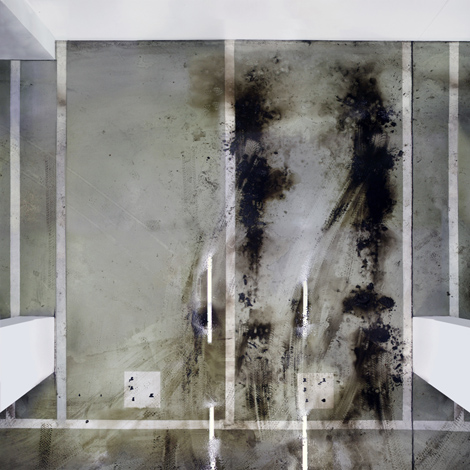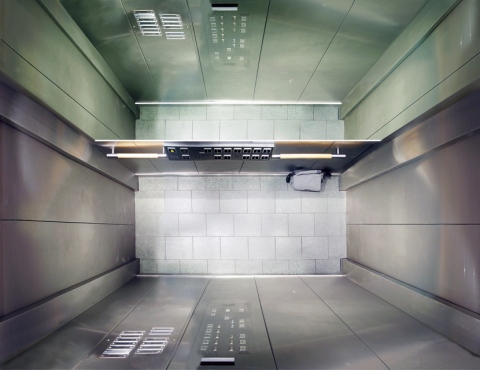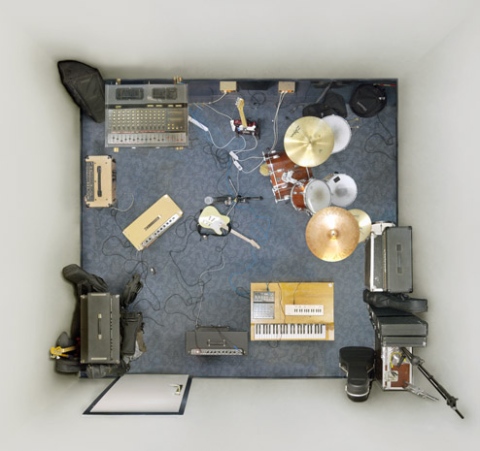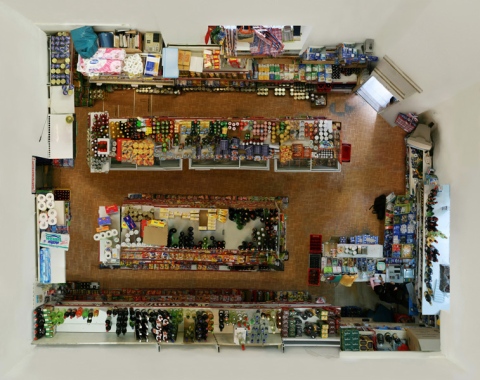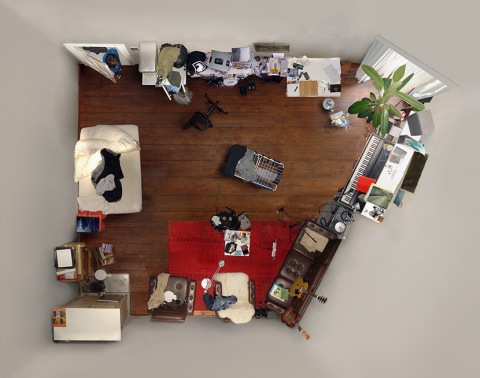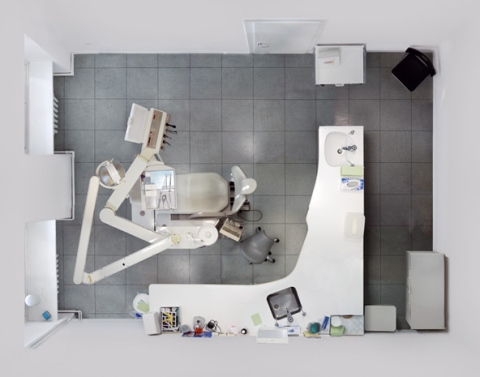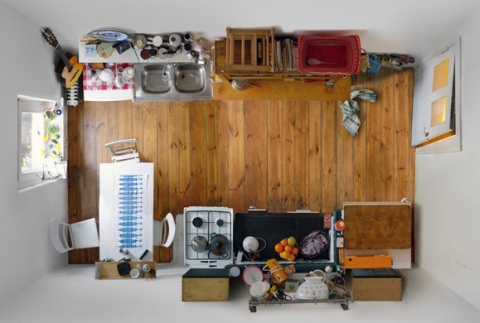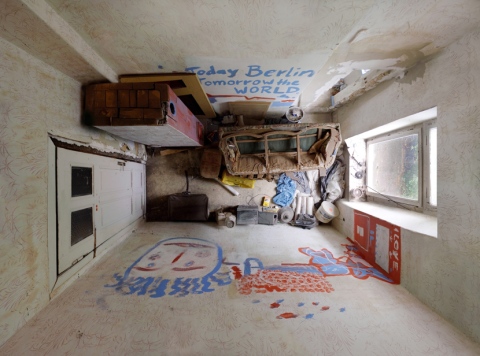Peru.
June 15, 2013 § 1 Comment
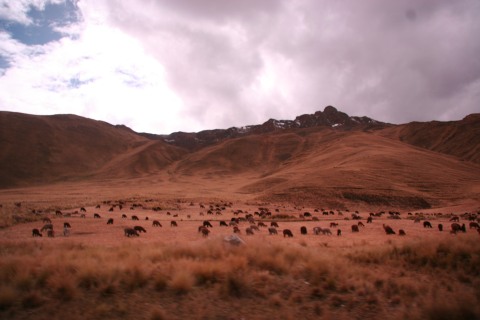
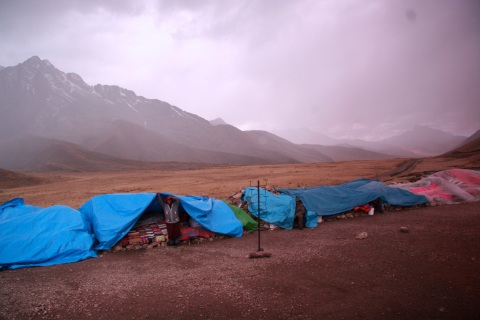
Peru Notes
Day 1, 6:00AM.
Landed in the Lima airport.
Bus packed with people, all the way to the front — and our bus, running alongside, only 15% full, I have an aisle to myself. The other bus has La Molina written on the side.
Little E.
May 15, 2013 § Leave a comment
Over the past four years I’ve luckily witnessed the engagement, marriage, and first child of these two. Photographing them today was sweet, and dinner at Sea Salt even better. Thank goodness for good people. I’m sad to see you go, but wish you plenty of love & luck on your new adventure.



Bonus: This awesome expression:

Profess, girl.
May 9, 2013 § 2 Comments
James Blake recently returned to Minneapolis and humbly tossed another tremendous experience onto the pile I’ve been stacking since 2011. I. Can’t. Even. But I’mma try. I’ve written about James Blake’s live performances before, but that was a choice. This feels less optional.
Blake penned the title track of his new album, Overgrown, on a plane a day after meeting Joni Mitchell, who had made a rare appearance at his Troubadour show in Los Angeles. My then-partner worked as the sound engineer for Blake on that tour, and our phone conversation after the show stuck with me; I recall it being a significant evening. They’d clearly just had one of those shows, one where everyone in the building is on-board, the band is truly integrated, the stars align, etc. Until typing this sentence, I’ve kept a sort-of-secret, brief recording (creepy as it might be it was worth it) of Blake and Mitchell speaking after the show, they then spoke privately for a long time. I have never felt fully comfortable sharing details of my brief experience hopping onto that tour, or others (I did so regularly — otherwise my relationship would’ve been paused for weeks/month at a time and that wasn’t much fun), because somehow those memories feel private. That being said, I feel I must profess.
Here, I attempt to review an album less (here’s a good one of those) and two experiential profound moments and their contexts more. In doing so, I hope to organize some messy thoughts and practice self-reflexivity so that I can, y’know, be a better me.
There are a few assumptions, or truths, undergirding the meaning of this post, perhaps worth clarifying:
I believe that it is possible to experience profoundness.
I believe these moments are, possibly intrinsically, ephemeral and rare. Not within our control.
I believe that we are better enabled to experience profoundness through interactions with nature, art, and people—in that order,
and I believe that these moments are worth sharing.
Music is a collection of created and arranged sounds, it is a human endeavor. The history of instruments and music-making is fascinating itself, one I think capable of implying the human condition. So it is not surprising to me that two of my three or four* experiences of profoundness were elicited during a live music performance. The first happened on June 16th, 2007, while I was sitting on a blanket next to one of the hearts of my life, Lolly, under a hot Tennessee sun and encountering John Butler’s music for the first time. My stepfather had passed away weeks earlier, and I had gone on the trip in search of solace. Butler oft performs a rendition of his 12 minute instrumental, Ocean, and on this day when he did so, I experienced profoundness. I don’t know what a profound moment might look like for another person, but mine feel like this: everything is going to be okay. I felt a swollen, incredibly grounded and overwhelming sense of reassurance and peacefulness, no articulable insight, not a stroke of brilliance, only an intense state of being. Such occurrences are so much… well, better than that it just took me four tries to correctly spell “occurrences” (occurance, occurence, occurrance, occurrence!). The banality of it is obvious but not unimportant.
Whenever I listen to Ocean, usually when I’m wanting to feel differently somehow, I am reminded of that moment and its message. I am reminded of my love for my dear friend and for sharing that moment with her. I am reminded that everything might, indeed, be okay. I have attended other John Butler Trio shows (in Austin and Chicago) chasing that feeling, searching to no avail. Wildly talented musicians, jamming my face off, but no profoundness. No everything is going to be okay.
I also experienced profoundness at a James Blake show at Lincoln Hall in Chicago on May 15th, 2011. I’d been with my partner on the tour for a week or so, and had seen several of Blake’s performances. They were excellent on their own–I’ve cried during Lindisfarne II more than once (in part because of Rob [guitar] and Ben’s [drums] performances), and at this time Blake was still emerging as a name in the States, so the shows tended to pull dub-loyal audiences, listeners in-the-know. For example, he played at the 7th Street Entry then (capacity 250), but more recently sold out First Ave for the second time on a Wednesday (capacity 1,500). I’ve written about the contribution that the audience makes to a show experience here, and think part of what I felt in Chicago is owed to those who were there with me in the room. Lincoln Hall is also the only room I’ve seen Blake perform in that can handle his sound sufficiently (there are levels of low-end that you simply cannot access without a proper low-frequency system, it shakes the room), whoever configured their sound system is heroic. Additionally, because I was primarily there to be with my then-partner, whose trade and creative expression is sound engineering, and much of Blake’s music needs expert live engineering to sound right, I was attentive to and aware of the talented mix I was being offered. Lastly, I was accompanied by my best friend Erica, and meeting up with a dear friend in a different city is always good times. Somewhere between Limit to Your Love (which hits SO. FUCKING. HARD.) and casting my eyes across the crowd, it happened: everything is going to be okay.
Blake’s shows produce the most impregnated silence I’ve ever observed from a musical artist, they test patience, and they’re beautifully executed, they intellectualize the work. Remembering his own transformative music moment, he once said, “I thought, this drives me so far into my own head, much more than anything has ever done.” I think if you listen closely you can see that inspiration, sentiment, witnessed in his work. The songs possess a tapped-into-our-human-condition sort of intimacy.
I hold that memory close to my heart, but because it is also steeped in personal stuff, I sometimes (oftentimes) avoid remembering it. I usually change the station when James Blake comes on, anxious that it might trigger a line of thinking I don’t want to fall into.
When it came time, then, to see James Blake play again, I worried. I knew I had to go, I wouldn’t miss it. Still, I worried that I would feel loss. That I would miss a time of my life which I hold dear, that thoughts of my relationship would interfere with my ability to engage the show, that I wouldn’t be able to love it. That it wouldn’t relocate my mind as I wanted and needed it to. But I did love it, because the music is strong enough to transfix the wandering mind. And, I was there with my favorite lady-date for live music shows, Marnie. Marnie works in the music industry, is deeply connected to the transformative possibilities of live music, has pitch-perfect taste, and can relate to my experiences more than anyone I’ve known closely. Additionally we ran into Joe and Paul, two other long-standing show-goers who I’ve seen great sets with. I found a great sight line on the ramp to the left of the desk, the FOH mixed a proper show, and I was mostly able to ignore the more-than-tipsy young ladies chatting and grinding on each other in front of me.
Girls swooned, Blake crooned. He is regularly framed as an indie heartthrob, but I don’t pine, I relate. Not because I’m indie heartthrob, but because the lyrics, nuanced inflection, and slow intentional layering of sounds until they form walls, invites you to relate to the eternal solidarity associated with music. And though I loved it, I also recognized differences in my experience of it.
I was surprised at how many people were surprised by the low-end when it first came in. I was surprised at how many people didn’t recognize the few older tracks Blake played, as his discography isn’t that large… yet. Previously, when Blake would begin to play I Never Learnt to Share, one or two people would “Woooo!” and it’d get caught in the first loop (he sings the introductory line repeatedly to loop on different levels and harmonize with his own voice). That one distinct “Woooo!” infiltrated the initial loop always irked me, because it gets used throughout the track and it’s distracting. But at this show, because the crowd was larger and his work is more popular, a lot of people ‘Woooo!’d and it functioned differently in the loop, the resounding cheer added a different dynamic which made that specific track unique, just that once, at that time and that place, never to be seen or heard the same again — I’m sure something similar happens at his other performances. Finally, he now has a lighting designer on tour. A well-engineered lampy show submits further impact.
Taking in all of those bits, I was compelled to admit to myself that I was having an interesting, productive personal moment with the show that was special. Mine. Like, yeah, this is cool, and that was cool, and maybe you’re a little bit cool too sometimes, and that’s okay to feel right now, so you’d better indulge in the feeling, because it’s temporary but for now it’s all yours. I did not experience profoundness, but I felt gratitude. Grateful for the experiences I’ve had, that they exist at all, and that they make me happy more than sad.
*Three if you don’t count the one I had while shrooming.
Honorable mentions behind the cut.
Tod Seelie
May 3, 2013 § Leave a comment
Swimming Cities of Sereneissima
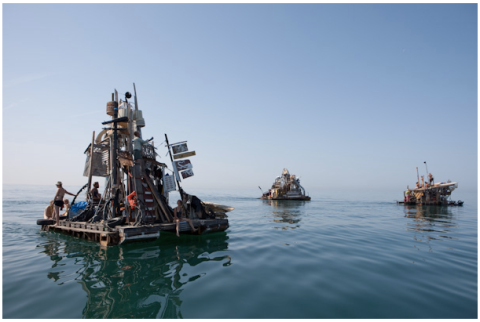
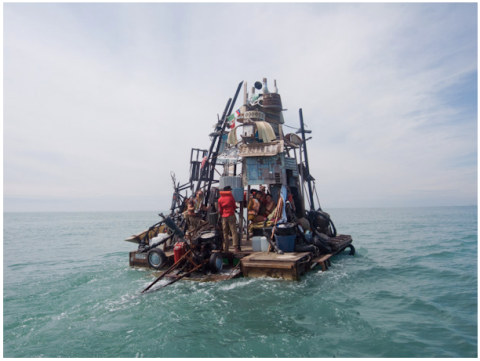
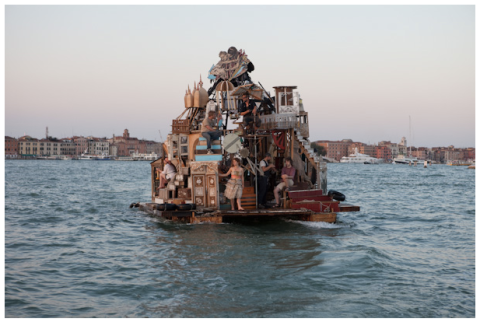



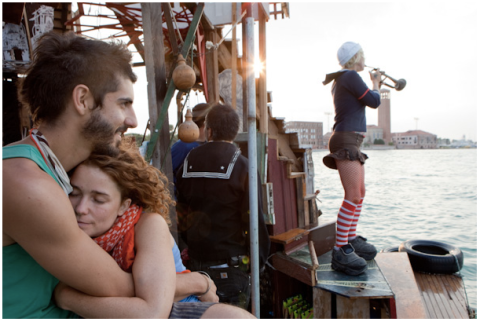
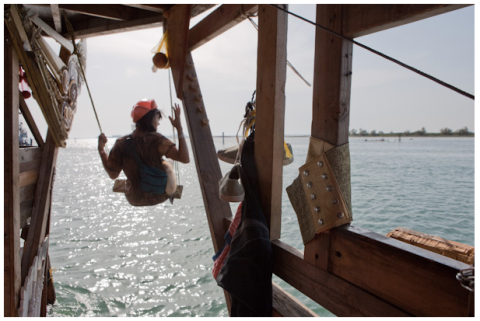
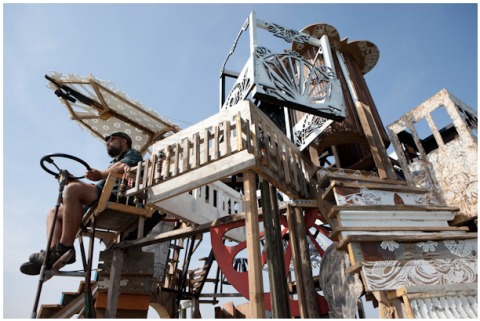
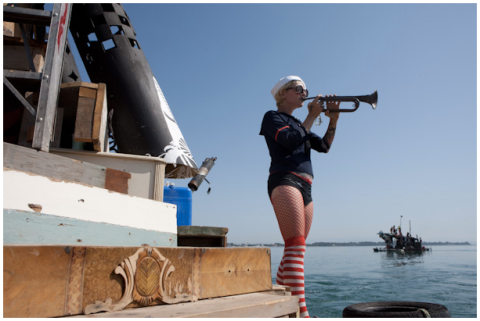
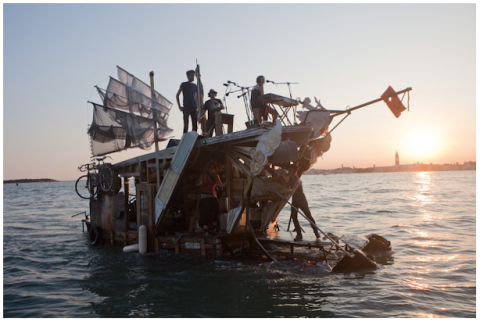
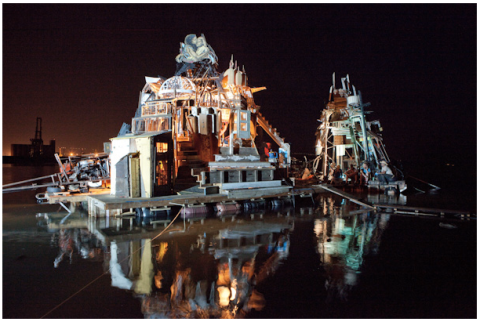
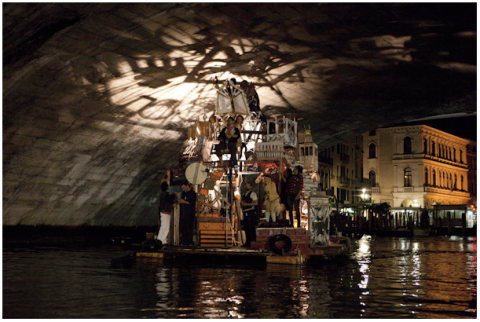
Michael Cannell’s piece on the Swimming Cities of Serenissima:
“Imagine if Ken Kesey and the Merry Pranksters had reenacted “The Adventures of Tom Sawyer.” That’s roughly what Tianna Kennedy and her crew pulled off when they led a flotilla of floating scrap sculptures from the coast of Slovenia to the heart of Venice.
In a talk last Friday at the Conflux Festival in New York, Kennedy described the trip, an art and design project known as the Swimming Cities of Serenissima, as “making and riding beautiful junk from Koper to Venice with many dirty people, putting on a show, and then taking it all apart again.”
Fortunately for Kennedy, she’d already had some experience converting squat house culture into a functioning fleet. Last year she worked in the production crew for an experimental film, The Flood, based on the artist Swoon’s trip down the Hudson River with artists and performers on seven intricately crafted rafts made from garbage and other scavenged material. The group staged performances in towns along the way. The film used the crafts as a backdrop for a story about an escape from economic and ecological collapse.
A dumpster-diving, freegan crew needs a strong organization to make the 130-mile trip to Venice. And it started when Kennedy (above) and the Swimming Cities Team began pulling wood out of construction site dumpsters on the streets of New York in December 2008. What they couldn’t scavenge they bought from Build It Green, a salvage lumber outlet in Astoria, Queens. They then shipped two 40-foot containers to the Slovenian town of Koper where she assembled the parts into three 20-foot-tall sculptures floating on pontoons. The group crew of 30–plus a few stowaways–navigated across the Adriatic to Venice in time to stage a series of performances at the Biennale. Along the way Kennedy bluffed her way through international maritime law, negotiated Italian insurance forms and argued endlessly with the Italian Coast Guard. When she tried to get a safety certificate from a German engineer, he said, “Oh no. It’s you. I saw you on the news.”
Swimming Cities was an anarchic crew with more than its share of conflict and mishap. One member broke his neck jumping off a building, and Kennedy found herself contending with storms, arrests and bickering. “The only thing that was sacred was the motors,” Kennedy said. “Nobody could fuck with the motors.”
The crew had almost no money, and they subsisted on bread, prosecco and beer. “I was miserable for a good 70 percent of the time,” Kennedy said, until they floated victoriously into Venice for two weeks of puppet theater, silent movies and music alongside the Venice gardini in June. “Kids asked me ‘Where’s Peter Pan,” she said. “I felt like Santa Claus.”

